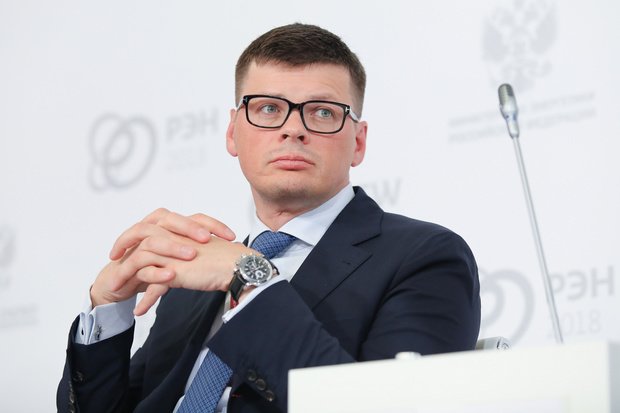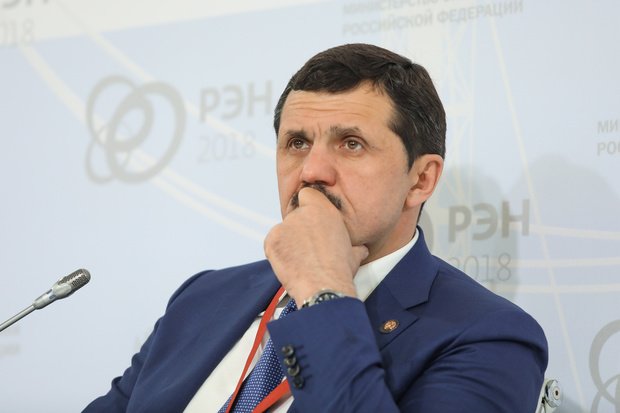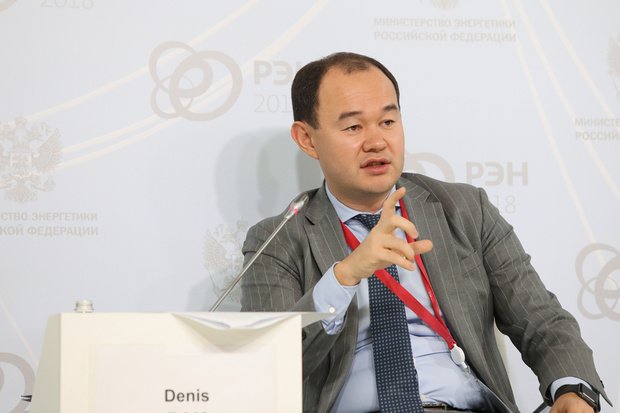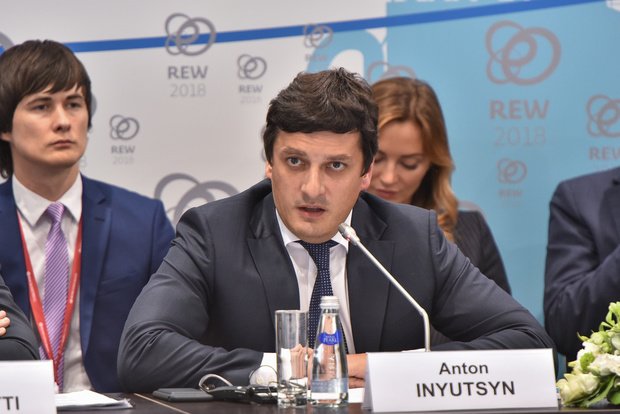''An illusion is created that if you drive an electric car, you make enormous contribution to the environment''
Experts of the Russian Energy Week discussed the transition of transport to alternative fuels
The sales of previously owned electric cars in Russia have increased almost threefold over eight months. Experts explain this by the fact that the right-hand drive electric cars are inexpensive and cheaper to maintain. But not everything is as simple and 'environmentally friendly' as it may seem at first glance. The problems of development of the market of electric and gas cars and, in particular, why investors do not want to invest in the construction of a network of natural gas stations were discussed at Russian Energy Week (REW), held in Moscow. Read the details in the report of Realnoe Vremya.
The contribution of cars to the gross emission of pollutants will reach 45% by 2025
Russia is experiencing a boom in automobile vehicles. Every year the number of cars grows by 5%. At this rate, 450 cars will account for 1,000 people by 2025, and the 'contribution' of vehicles to the gross emission of pollutants will reach 45%.
''The main damage is caused not by enterprises, although the volume of total emissions they emit is higher, but it is mainly spraying outside the sanitary protection zones, high. Harmful substances from automobile vehicles accumulate where we breathe,'' said First Deputy Minister of Natural Resources and Ecology of the Russian Federation Denis Khramov at the panel session of REW called ''Gas and electric vehicles in Russia: possible rates and development strategies''.
Total emissions in the dirtiest 12 cities of Russia are to be reduced by 20% — this is one of the tasks of the national project ''Ecology''. To achieve this goal, it is planned to switch cars to environmentally friendly fuel. But for drivers to switch to an environmentally friendly type of fuel, we need, of course, infrastructure. According to the traffic police, in Russia there are about 50 million units of transport and only 380 gas stations where they can refuel with methane. It is difficult to develop the network — the payback period of such gas stations exceeds 15 years, so investors do not want to invest in this direction.

''On average, their load is 25-27%, which, of course, is very little. An interesting detail — if there are only a few gas stations in the region, then the workload is low, and where the networks of gas stations are developing, where there are 10-15 gas stations, for example in Tatarstan they will exceed 20 soon — the level of loading of each gas station is growing there. This suggests that there is a consumer who begins to believe in it and shifts to the corresponding mode of transport,'' said Deputy Minister of Energy of Russia Anton Inyutsyn.
Subsidies are the key to the development of the gas motor fuel market
A new programme will be implemented in Tatarstan from 2019 to 2021 for the development of the gas motor fuel market. Within its framework, the republic is ready to transfer 30 hectares with infrastructure and the ''last mile'' to those who will build automobile gas-filling compressor stations (CNG stations) or purchase mobile gas-filling stations. Now there are 19 CNG stations in Tatarstan, 9 of which have been built in the past 5 years.
''Over the years, we have grown: in 2012 we consumed 4,5 million cubic metres of compressed natural gas, and in 2017 – 30 million cubic metres. At the same time, the load of gas stations was 5%, now it is about 30%,'' such figures were given by Deputy Prime Minister — Head of the Cabinet of Ministers of the Republic of Tatarstan Shamil Gafarov.
Besides, the republic has adopted a subsidy programme providing the equipment switching to gas. Thanks to it, 2,000 units of vehicles switched to environmentally friendly fuel. In addition, Tatarstan has purchased another 2,100 units under the federal programme of subsidizing the purchase of new equipment.

'''This year we are building one CNG station, next year — another two. It is quite difficult to attract people to this process, individuals caught up last year. This year already 500 physical persons switched to the compressed natural gas,'' Gafarov added.
The republic is planning to continue subsidizing the vehicle switching to gas. At the same time, if the federal benefits for the purchase of new equipment remain, the volume of natural gas consumption in the country in 2021 may exceed 100 million cubic metres.
Deputy Minister of Energy of Russia Anton Inyutsyn agrees that the subsidy is the key to the development of the gas motor fuel market. Therefore, the ministry of energy plans to go to the government with the initiative to subsidize capital costs for the construction of the CNG in the amount of 25-30%. Such benefits can be a good incentive, as the equipment for such stations is much more expensive than for traditional gas stations.
Three global trends: hybrids, electric cars and gas as motor fuel
Abroad they also count on gas as fuel. Almost all developed countries have adopted technical regulations that limit CO2 emissions from vehicles. In Europe, since 2020, stricter requirements are going into effect — no more than 95 grams per kilometre.

''If the new car exceeds the norm by one gram, the owner will have to pay a fine of 95 euros. And so it is for every gram. Accordingly, for the excess of 100 grams the penalty is nearly 10,000 euros. Without a fine, only three types of cars can fulfill this requirement: hybrids, electric cars — they are now offered by all concerns, and running on gas,'' said Director of the Automotive Industry and Railway Machinery Department at the Ministry of Industry and Trade of the Russian Federation Denis Pak.
''What is 95 grams per kilometre? According to statistics, the usual Logan car, 100 horsepower, emits 167 grams per kilometre. The Mercedes of C class, with 150 horsepower — 126 grams. The hybrid Porsche Cayenne with 330 horsepower — 79 grams. Europe, introducing the requirements, gives a strong technological impetus, and we have a risk to get backward technologies that Europe will not need, and they will try to sell them on the market of third countries,'' explained Deputy Director General of FSUE NAMI Alexey Gogenko.
The world market of electric cars is growing exponentially — in August they sold four million cars. According to forecasts, the next million will be sold in just six months. At the same time, only 2,500 electric cars drive on the roads of Russia today.
''The leader here is China, where 37 per cent of electric cars are operated. As for Russia, we are ahead of the world in terms of pace. Over 8 months, the sales of used electric vehicles has increased 2,8 times. The most interesting thing is that it is Moscow and Vladivostok, because the cheapest cars are right-hand, and they can compete with traditional cars, but cheaper to operate. A kilometre of run on an electric car costs about 35 kopecks, and on an ordinary car — 3 rubles. Plus, the absence of emissions,'' said Chairman of the Association for the Development of Electric, Unmanned and Connected Transport and Infrastructure Iya Gordeyeva.

''I would like to avoid the use of equivocal language. It seems that electric transport is environmentally friendly in a global sense. This is absolutely not true. To take electricity from the outlet, it must be produced, and the lion's share of generation in the world is done on coal. But coal is the dirtiest generation. Yes, in large cities they will switch to electric transport, but what will stand on the borders of cities? Power plants that will also pollute the atmosphere. An illusion is created that if you drive an electric car, you make enormous contribution to the environment. Around yourself — yes, but globally — no,'' Anton Inyutsyn explained.
Bloomberg predicts that by 2025 10 per cent of the world's transport will be electric. The price will play a big role in this: over 6 years, producers have managed to reduce the cost of lithium batteries, the most expensive element of the electric car, by 30 per cent, and in the future the price tag will become even less.